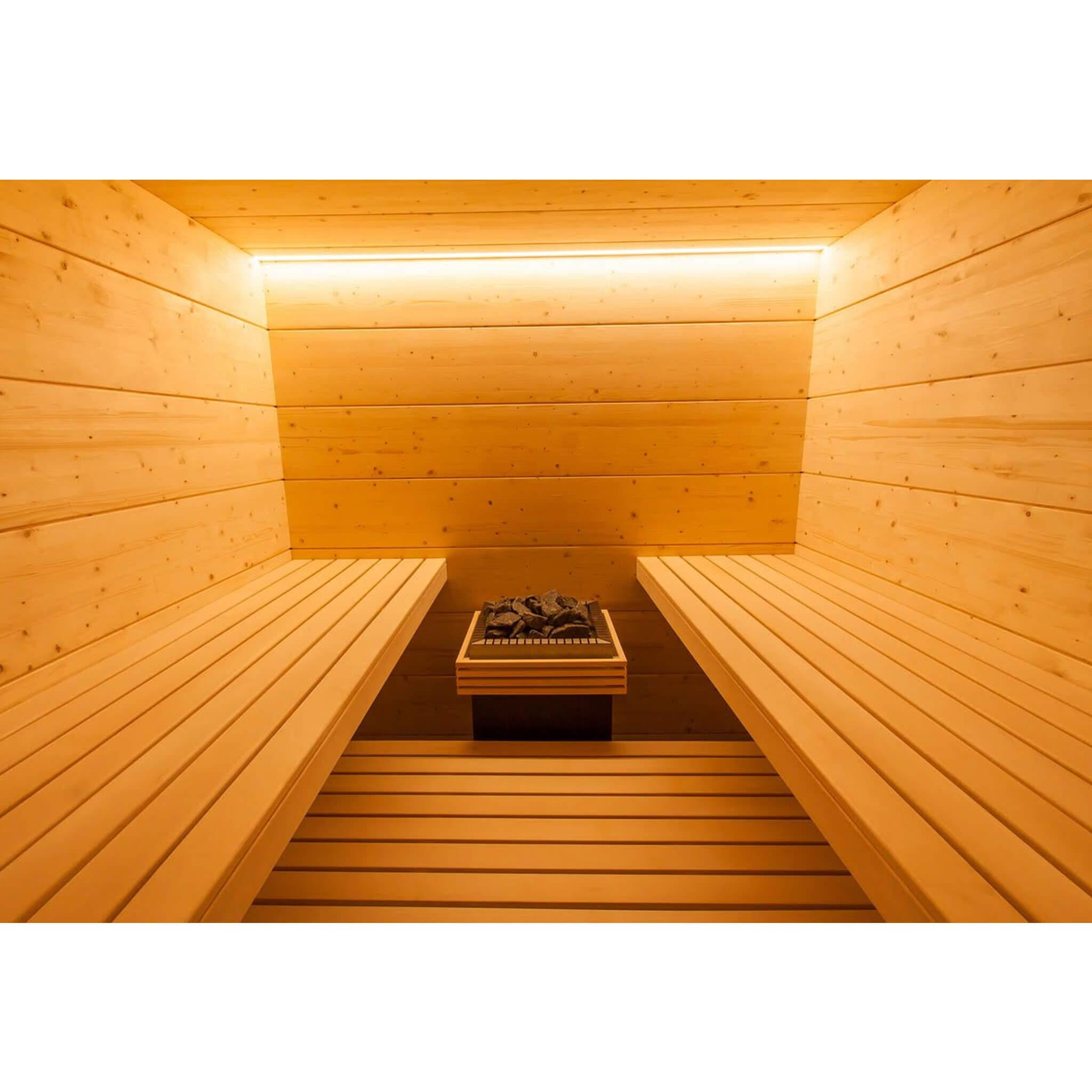Getting The Traditional Sauna To Work
Getting The Traditional Sauna To Work
Blog Article
Traditional Sauna - Truths
Table of ContentsWhat Does Traditional Sauna Mean?About Traditional SaunaThe Greatest Guide To Traditional SaunaThe Basic Principles Of Traditional Sauna
The majority of the weight lost in a sauna is water loss and is re-gained upon rehydrating. Nevertheless, without a doubt sauna can be a vital part of a healthy and balanced weight-loss program. To look at the distinctions between traditional and IR saunas, I will divide these right into verifiable, theoretical, and made differences.Thus, the most popular point in the saunawhich goes to the ceiling directly over the sauna heateris generally between 185 and 190 F. Traditional Sauna. Claims that a typical sauna goes beyond 200 F is merely not true and not appropriate for electric saunas marketed in the United States. The temperature for a far-infrared sauna is normally set between 120 and 140 F; however, unlike the typical sauna, the goal in and IR area is not to achieve a high temperature
As a result of this, the temperature distinction is almost unnecessary, considering that excessive sweating results in both sauna kinds, but the technique of warming the body is various. In an IR sauna the bather will certainly feel warm and will sweat profusely, however at a lot reduced temperature levels. Therefore, if the objective is to spend longer amount of times in the sauna, the IR sauna is a good selection.

Traditional Sauna Can Be Fun For Anyone
When the high temperature is accomplished, the elements cycle on and off to maintain the high temperature level. Most standard sauna individuals appreciate pouring water over the rocks to create vapor to increase sauna moisture degrees. The advantages of putting water over the rocks include: making the space much more comfy, moistening the nasal flows, and permitting the usage of aromatherapy by mixing vital oils with the water.
In a far-infrared sauna, the warm waves permeate the body to efficiently heat the body and increase the body core temperature level. To accomplish this enhanced temperature level, Far-infrared emitters produce infrared energy which is close to the same wavelength as that which the body normally emitsoften described as the "Important Array" of 7 to 14 microns), so the energy is well gotten by the body.
When the power enters the body, it triggers the body temperature to increase and ultimately leads to perspiration. In an infrared sauna it is very important for the emitters/heaters to remain on practically frequently. Because there is no mass of rocks to maintain warm, the sauna will certainly cool down if the emitters shut off.
As pointed original site out above, the sauna bather in an infrared room wishes to position himself before operating emitters to get maximum take advantage of the warmth. The heating time for both spaces can be very different, relying on just how the rooms are utilized. For a conventional sauna, a bather must allow 30-40 mins for the space to accomplish a preferred temperature level and to appropriately pre-heat the rocks.
The Only Guide to Traditional Sauna
A well built sauna will commonly accomplish a temperature level of 150-160 F in regarding 30-40 mins. For hotter temperatures, the room may require to warmth for a longer period.
To some, 15 minutes was "squandered" while the infrared power heated the timber panels as opposed to heating up a body, while others locate a pre-heated space to be a lot more comfortable and believe a blog here raised beginning temperature is essential to start sweating. The size of recommended usage for each and every space is roughly the same (10-15 mins per session); nonetheless, due to the reduced air temperatures and the ability to feel the impacts of infrared warmth quicker than a conventional sauna, it is not uncommon for a person to invest an overall of 20-30 minutes in an infrared sauna.
Conventional saunas often tend to be bigger (hence make use of more electrical energy) than infrared saunas, although traditional saunas are certainly available in one and 2 person sizes also. For a two-person standard sauna, 5x6 or 5x7 size is most prominent. The top bench can easily seat two or three individuals and is also long sufficient to rest during the sauna session.


The ordinary price per kWH of power in the united state is around $0.11, so a 4.5 kW heater will certainly cost about $.50 to compete one hour, if the heating system runs continually for one hour. Typically a sauna heater will certainly compete 75% of the initial hour and 50% of subsequent hours on since the elements cycle once the set temperature is attained.
Little Known Questions About Traditional Sauna.
A two individual far-infrared space is usually physically smaller than a typical sauna, typically about 4' x 4' or smaller. The IR heating unit is normally Web Site 1.5-1.7 kW utilizing a 120 volt 15 amp plug-in service. Since the space can be used faster than a sauna area, we will assume the area is made use of for to of an hour consisting of warm up time.
There is a rarely gone over difference in the social experience between the two areas. While our culture has actually shed a few of the social benefit of the standard sauna experience, it can be really socially fulfilling. From family members time in the sauna, to heart-felt discussions with loved ones, to sauna partiesthe standard sauna experience can cause intimate socializing.
Most greater end infrared spaces consist of colored light treatment, audio systems and full-glass fronts.
Report this page